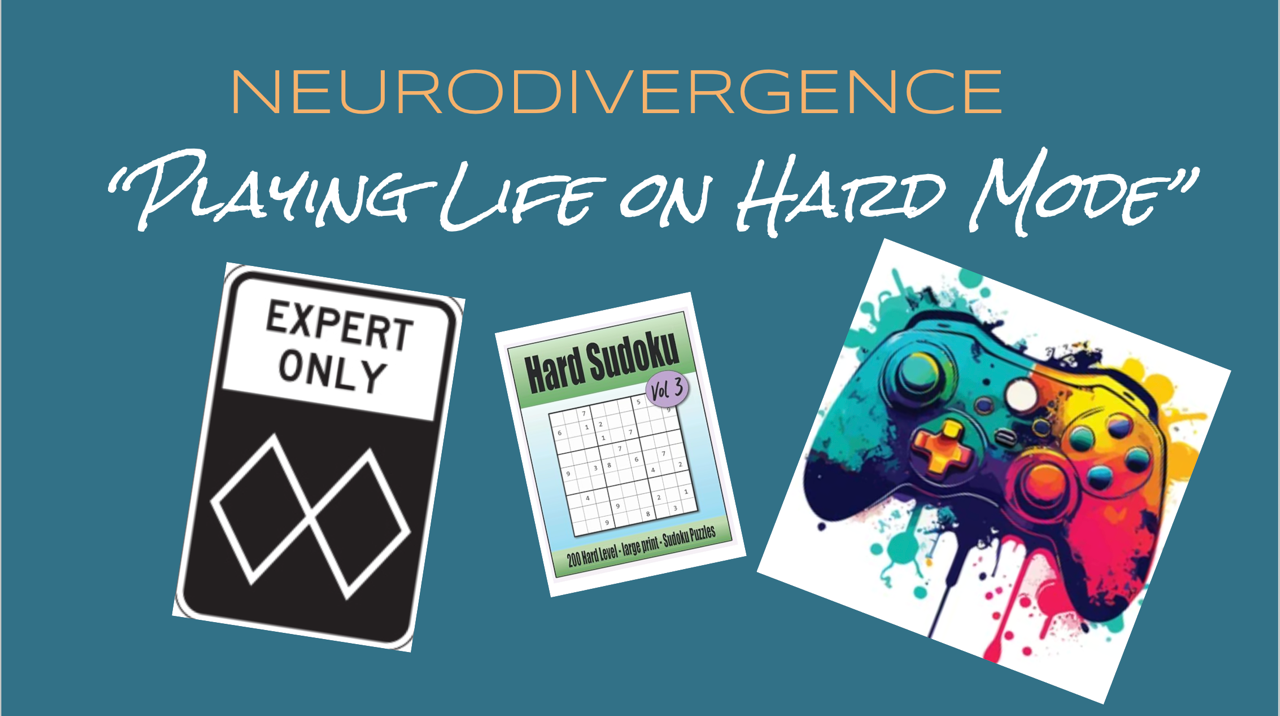Group Hug…
Meg, Shannon, Marcee, Robin, Jen and friends
Dear Friends,
When I present a NeuroEmpathy workshop with Marcee, Shannon, Robin or Jen, I always make it very clear that we, the presenters, are neurodivergent. I forget that this is not the general norm in our society and I’m often surprised by the conversations spawned by our self-disclosure. It feels almost like a cork joyfully popping from a bottle of champagne– we release the pressure and people smile and laugh more. Participants feel drawn to talk to us afterwards, to share their stories and identities and lived experiences. In our presentations, we aim to be straight-forward about our strengths and our struggles, laughing while contextualizing things, giving examples of friction points and then modeling acceptance. It honestly feels as if, in proudly proclaiming our own Autism, ADHD and Dyslexia, we erase the shame for others… at least for a few moments anyway. When we stand tall and proud in our divergent identities we take up space, which in turn holds space for others to stand with us. By bringing visibility to invisible disabilities, we help people feel seen and heard, creating connection and belonging– building felt-safety for everyone. This is the advocacy work at the heart of Neurodiverse Connections.
Neurodivergent people are thrust into a world created by and for Neurotypical processing styles, and then expected to function in it effortlessly. It’s hard to capture the complexities of this existence, but when we work with students we compare it to “Playing Life on Hard Mode.” After a NeuroEmpathy exercise intended to amplify the experience of being dyslexic, we encourage middle school students to privately consider these questions.
Imagine your game was set to Hard Mode, and your friends’ games were all set to Easy Mode….
What thoughts or assumptions might you make about yourself?
Would you want to know that your game was permanently set to hard mode? Why?
Would you want others to know? Why?
Could your game being set to hard mode have an impact beyond the time you spend actually playing that specific game?”
Though the questions are intended to be self-reflective, without fail, at least one student shares their own neurodivergence including their thoughts on the questions. Immediately, classmates join in and before we know it, there is a cross-neurotype discussion of how their brain processing impacts them and how they can better support each other. With ALL of the students, we brainstorm ways that different processing styles make some things inequitable, and source ideas on accommodations, again, from all the students. Through a simple discussion of NeuroEmpathy, we transform something that can be a secret source of shame for some students, into something that can build relationships and connections among classmates. It’s pretty awesome.
As a highly-masked, late-identified Autistic ADHDr, I find it hard to imagine how my life might have been different had I known at their age what I now know. But I DO know that armed with understanding, acceptance and tools for self-advocacy, today’s middle-schoolers are better prepared to recognize and evade the ableism, abuse, toxic relationships, addiction, and self-harm that shaped the lives of earlier generations of neurodivergent folks. I’m so grateful that these bright kiddos don’t need to be part of that old narrative.
We need to reach more young people, and just as importantly, we need to reach the adults who shape their world. Now more than ever, it is critical that do everything in our power to make it safe to be who and what this world needs us to be.
Thank you for your support this year. I can’t wait to work with you in the future!
Wishing you Low-Demand Holidays full of laughter and connection!
With GRATITUDE that I get to do this work,
Meg Wolf
Group Hugs everyone! Congrats on some great work— here’s to 2025!



